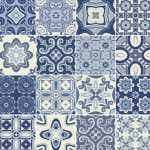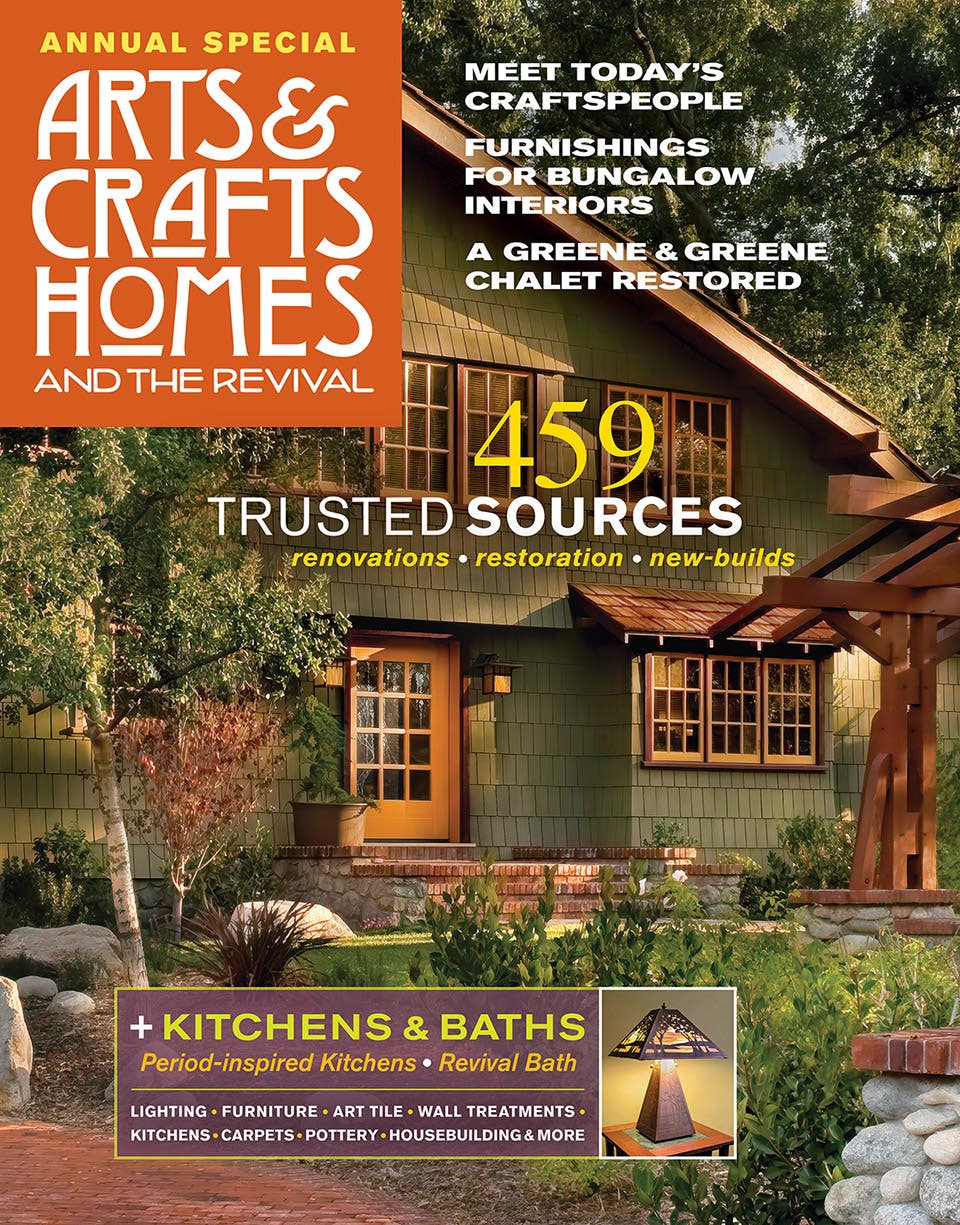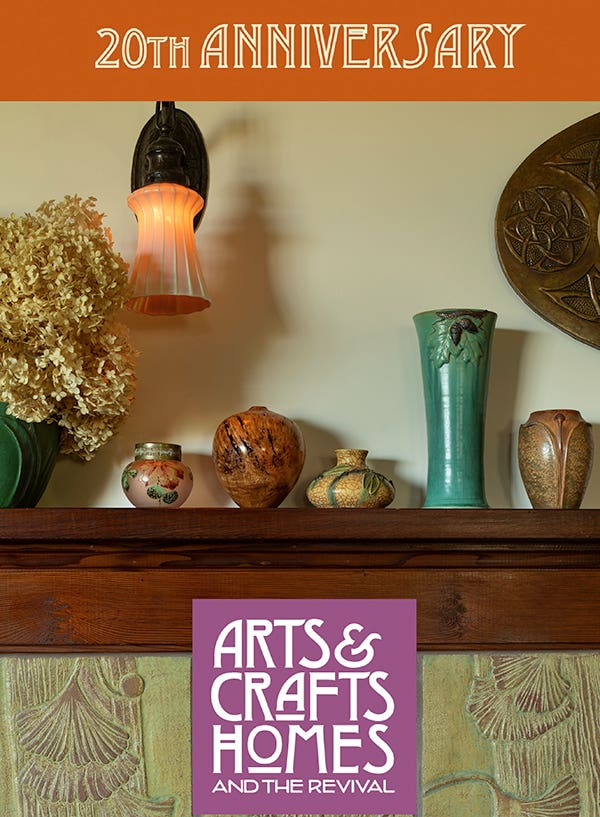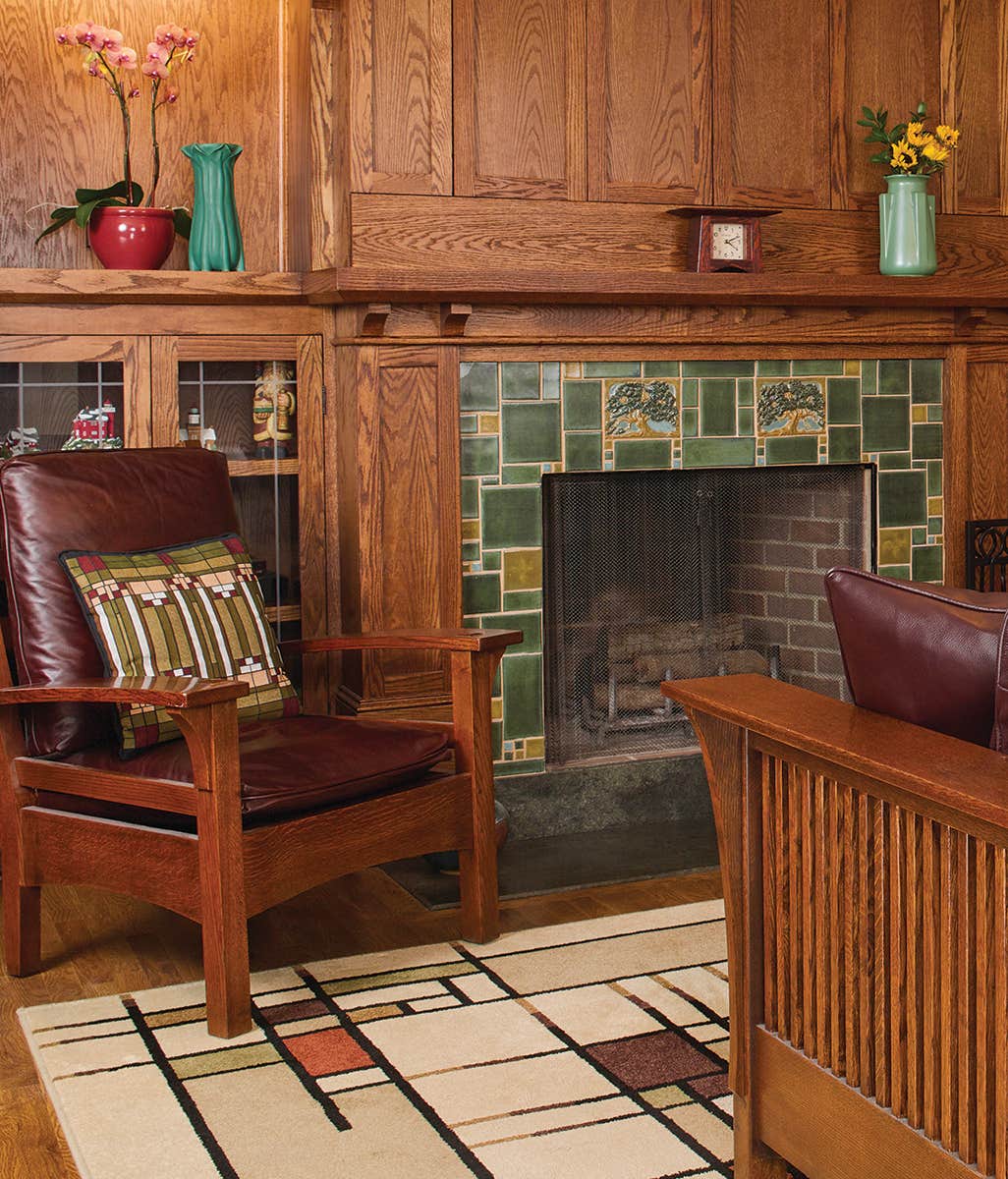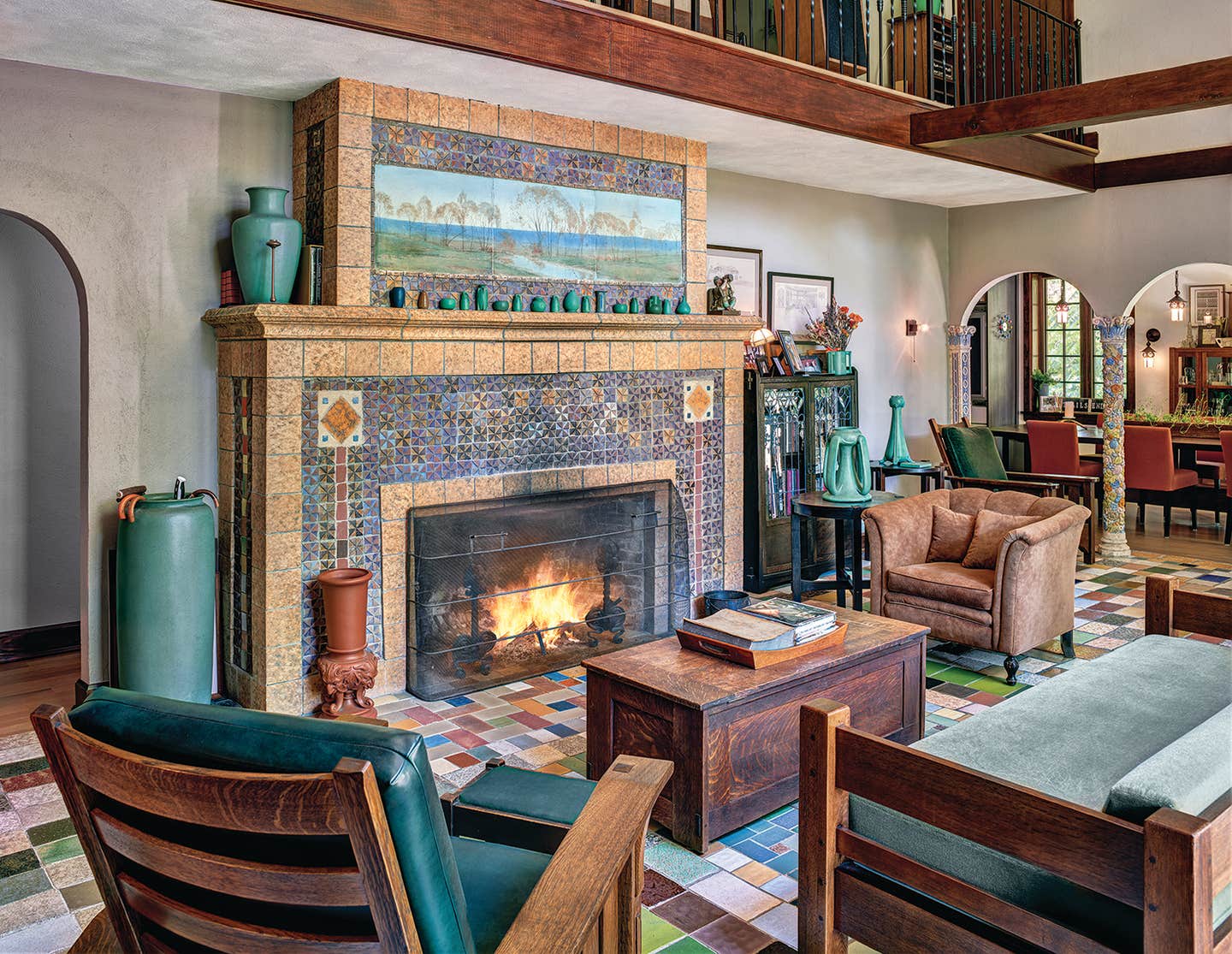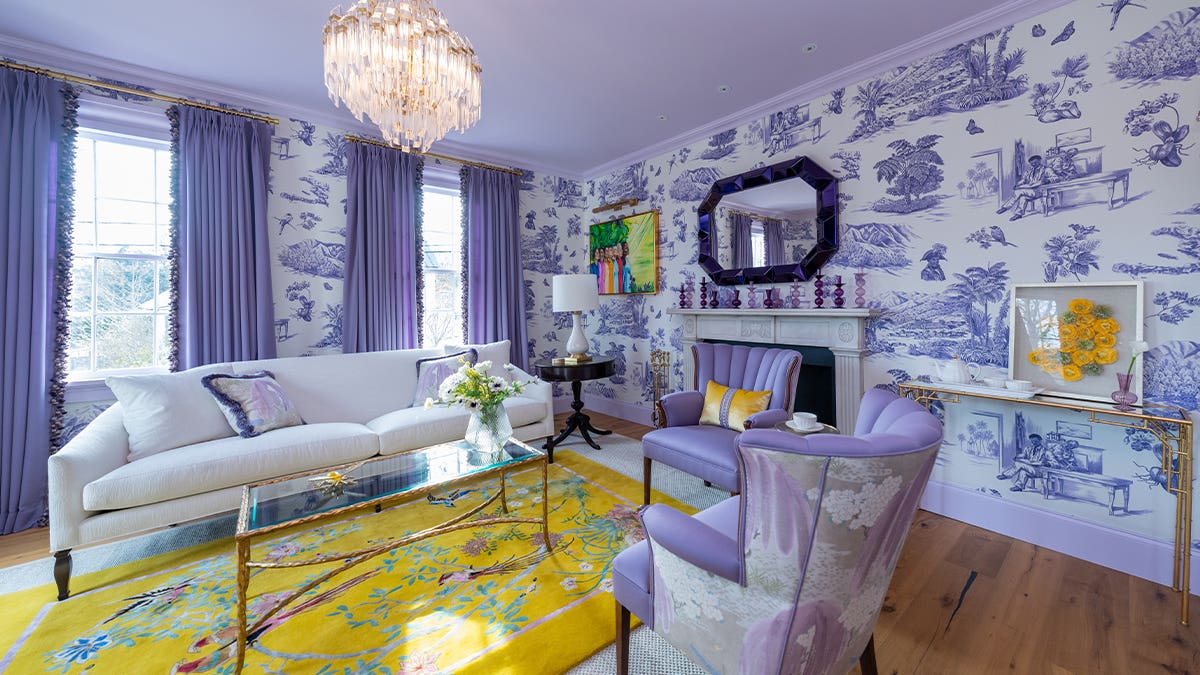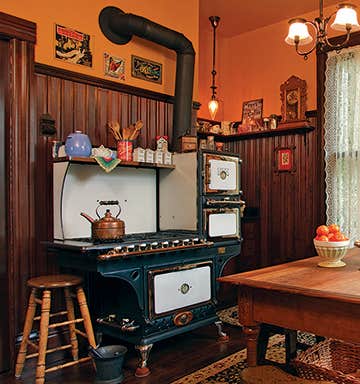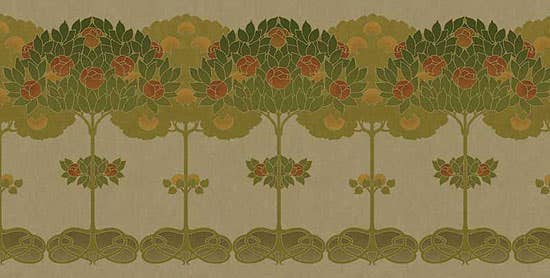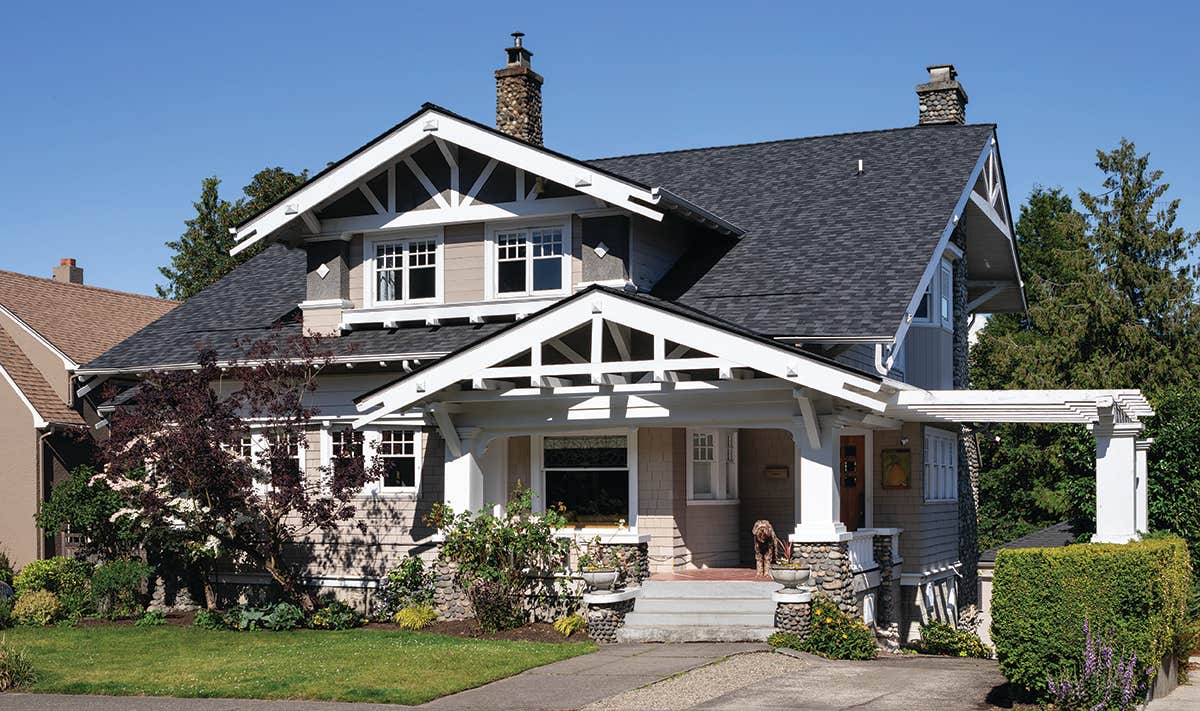Art Lamps Then & Now
More than a century ago, Louis Comfort Tiffany gave the world the art lamp, which radiates more than light, adding beauty in greater proportion than its modest size would suggest.
Photo by Dan Mayers
Tiffany— known for his studio’s intricate art-glass shades and sculptural bases—was helped along in the creation of the art lamp by wizards of other mediums, among them copper and mica, mixed metals, oak, pottery, shell, wicker, and handmade paper. While there is no substitute for an authentic table lamp from Tiffany Studios or the Copper Shop of Dirk Van Erp, artists like Michael Ashford, Renee and William Morris, and Michael Adams of Aurora Studios are giving the old boys a run for their money.
Or perhaps I should say the old girls. Women selected, cut, and hand-foiled the mouth-blown glass used in Tiffany lamps. Tiffany invented the leaded glass shade, a style that has been copied ever since. Unlike most of today’s budget-minded reproductions, these extraordinary creations were intended to be true works of art.
Tiffany Studios made superb use of slag glass, a type of variegated glass that shows color graduations ideal for scenic effects, like a lamp decorated with reeds, or a sunset mural. Typical colors include amber, yellow, green, citron (a blend of yellow and green), blue, buff, or rose, often streaked with another color.
Tiffany is also known for favrile glass, a lustrous glass with an almost liquid quality, often displaying feathery patterns and iridescent coloration. Tiffany destroyed all of his formulas in 1930, but a handful of studios—including Lundberg Studios and Phoenix Art Glass—are making reasonable facsimiles of this lustre glass today.
Art glass shades could be overlain with metals, frequently in latticework or vine-like designs. One of the most innovative designers of this style was Otto Heintz, who created unusual lamps with sterling silver overlaid on bronze, often applying similar filigree to the shades. Period examples of his work are available today from the Heintz Collection.
Art lamp bases sold by mid-priced mail-order specialists like Montgomery Ward were usually cast metal, with a variety of finishes that ranged from rich velvet brown and mottled copper to silver-plate. Other bases were made of ceramic pottery (Tiffany did a line of lamps using Grueby bases, and Fulper produced art lamps), quartersawn oak (a favorite material of Gustav Stickley), and wrought iron.
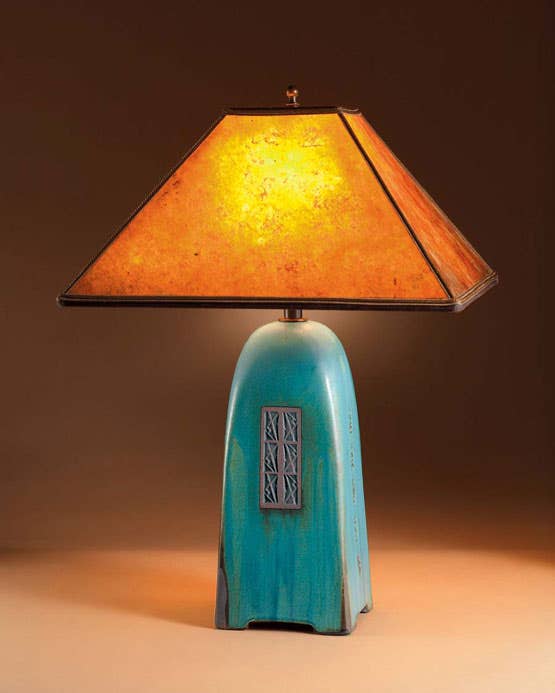
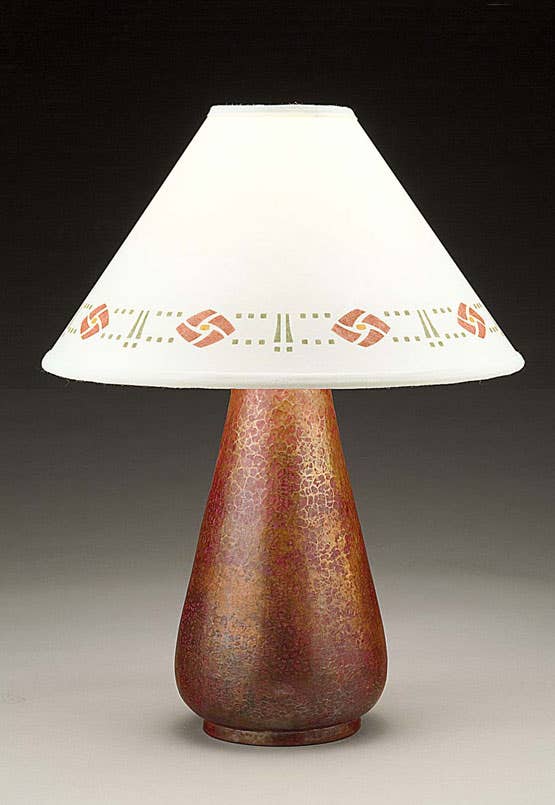
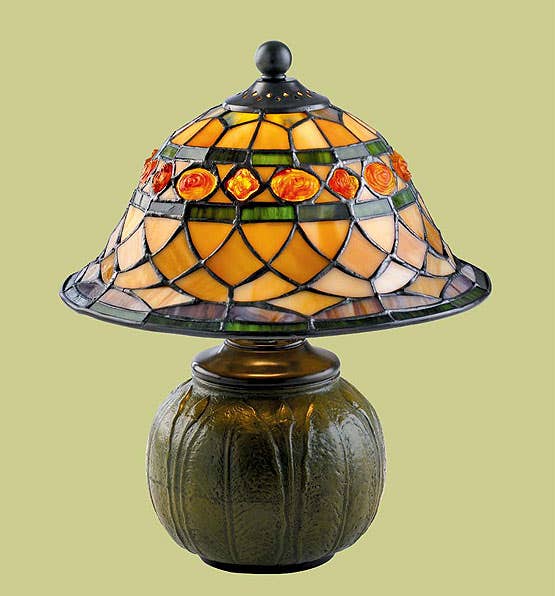
The most famous of metal bases, of course, are those in hammered copper. Dozens of artists worked in copper, including Lillian Palmer in San Francisco, Karl Kipp and the Roycrofters in East Aurora, New York, and Dirk Van Erp and his extended family in Oakland and San Francisco (the Copper Shop didn’t close until 1977). Among the wonderfully inventive shapes Van Erp is known for are trumpet, bean pot, bullet, mushroom, and the “warty” lamp (so-called because of its lumpy texture, laboriously created with a wood mallet).
Several companies specialize in Van Erp-style reproductions, notably V. Michael Ashford of Evergreen Studios, who hand-builds and patinates each of his lamps himself, and those from Mica Lamp Co., another shop that does its work in-house.
The classic Arts and Crafts shade for a hammered copper lamp is a conical mica shade with riveted copper rims. Because each shade is formed in layers, it’s possible to decorate the mica with images of leaves or flowers, a technique that is more frequently attempted with paper lampshades today.
Another type of Arts and Crafts shade—seldom seen in reproduction—is the wicker shade. Unlike inexpensive modern wicker lamps, period wicker shades are usually characterized by cross-hatched wicker lined with silk or cretonne, a fabric popular in the Teens and Twenties.
Mary Ellen Polson is a creative content editor and technical writer with over 20 years experience producing heavily illustrated know how and service journalism articles, full-length books, product copy, tips, Q&As, etc., on home renovation, design, and outdoor spaces.
